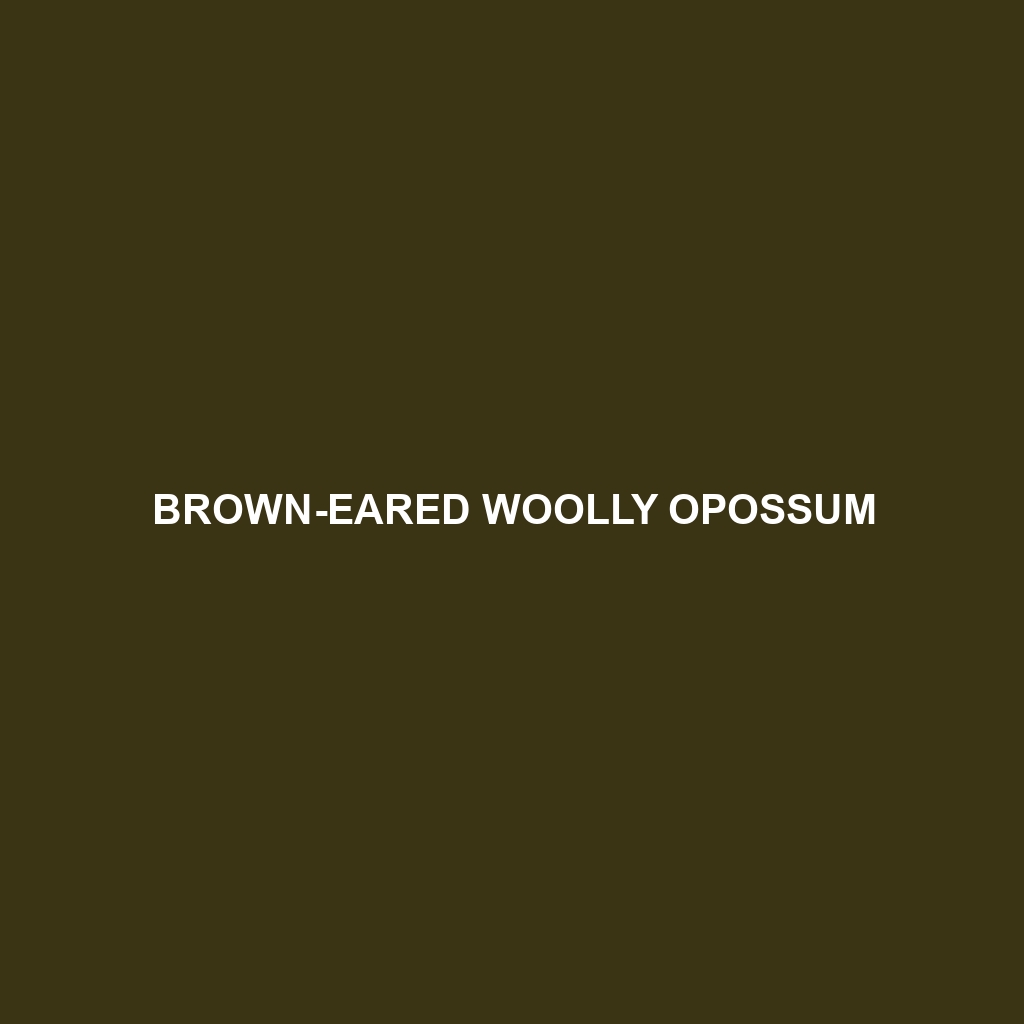Brown-eared Woolly Opossum (Caluromys lanatus)
The Brown-eared Woolly Opossum is a nocturnal marsupial native to the tropical rainforests of Central and South America. Known for its dense, woolly fur and distinctive brown ears, this elusive creature plays a crucial role in the ecosystem as a seed disperser and insect predator. Despite its important ecological roles, the Brown-eared Woolly Opossum remains relatively understudied, making it a fascinating subject for wildlife enthusiasts and researchers alike.
Physical Characteristics
Size: The Brown-eared Woolly Opossum typically measures between 25 to 35 cm (10 to 14 inches) in body length, with an additional tail length of approximately 30 to 40 cm (12 to 16 inches). They usually weigh around 200 to 400 grams (7 to 14 ounces).
Coloration: This opossum species boasts a thick, luxurious coat of woolly fur, predominantly grayish-brown to reddish-brown in color. Their ears are a distinctive feature, being brown and often slightly darker than the rest of their fur. The underbelly is usually lighter, varying from cream to pale gray.
Special Features: One of the most notable features of the Brown-eared Woolly Opossum is its prehensile tail, which is covered with fur at the base but becomes scaly towards the tip. This versatile tail aids in climbing and navigating the arboreal environment. They also have large, forward-facing eyes adapted for their nocturnal lifestyle, providing excellent night vision.
Behaviors
Social Interactions: Brown-eared Woolly Opossums are generally solitary animals, coming together only during the breeding season. They communicate through vocalizations, scent markings, and body language.
Feeding Habits: These omnivorous marsupials have a varied diet, consisting of fruits, nectar, insects, small vertebrates, and occasionally bird eggs. Their diet plays a pivotal role in seed dispersal, supporting forest regeneration.
Ecological Roles: As both a predator and a prey species, the Brown-eared Woolly Opossum contributes to the balance of the ecosystem. They help control insect populations and aid in the dispersal of seeds through their fruit consumption.
Habitats and Adaptations
Habitats: The Brown-eared Woolly Opossum is primarily found in tropical rainforests, but it can also inhabit secondary forests, plantations, and sometimes even urban areas with sufficient tree cover. They are arboreal and spend most of their time in the trees.
Adaptations: Adapted to an arboreal lifestyle, the Brown-eared Woolly Opossum has strong, grasping hands and feet, along with a prehensile tail for stability and movement among the branches. Their nocturnal behavior reduces competition for food and helps avoid daytime predators.
Conservation Status
The International Union for Conservation of Nature (IUCN) currently classifies the Brown-eared Woolly Opossum as “Least Concern” due to its wide distribution and presumed large population. However, habitat destruction and deforestation pose significant threats to their habitats, making conservation efforts essential to ensure their continued survival.
Fun Facts
The Brown-eared Woolly Opossum is also known for its exceptional grooming habits, often seen meticulously cleaning its fur.
Unlike many other marsupials, female Brown-eared Woolly Opossums do not have a well-developed pouch. Instead, they carry their young on their backs once they are old enough to leave the nest.
These opossums have a relatively short lifespan in the wild, typically around 3 to 4 years, but can live longer in captivity under optimal conditions.
By understanding and appreciating the unique attributes of the Brown-eared Woolly Opossum, we can better appreciate the rich biodiversity of our planet and the importance of conserving these remarkable creatures.
